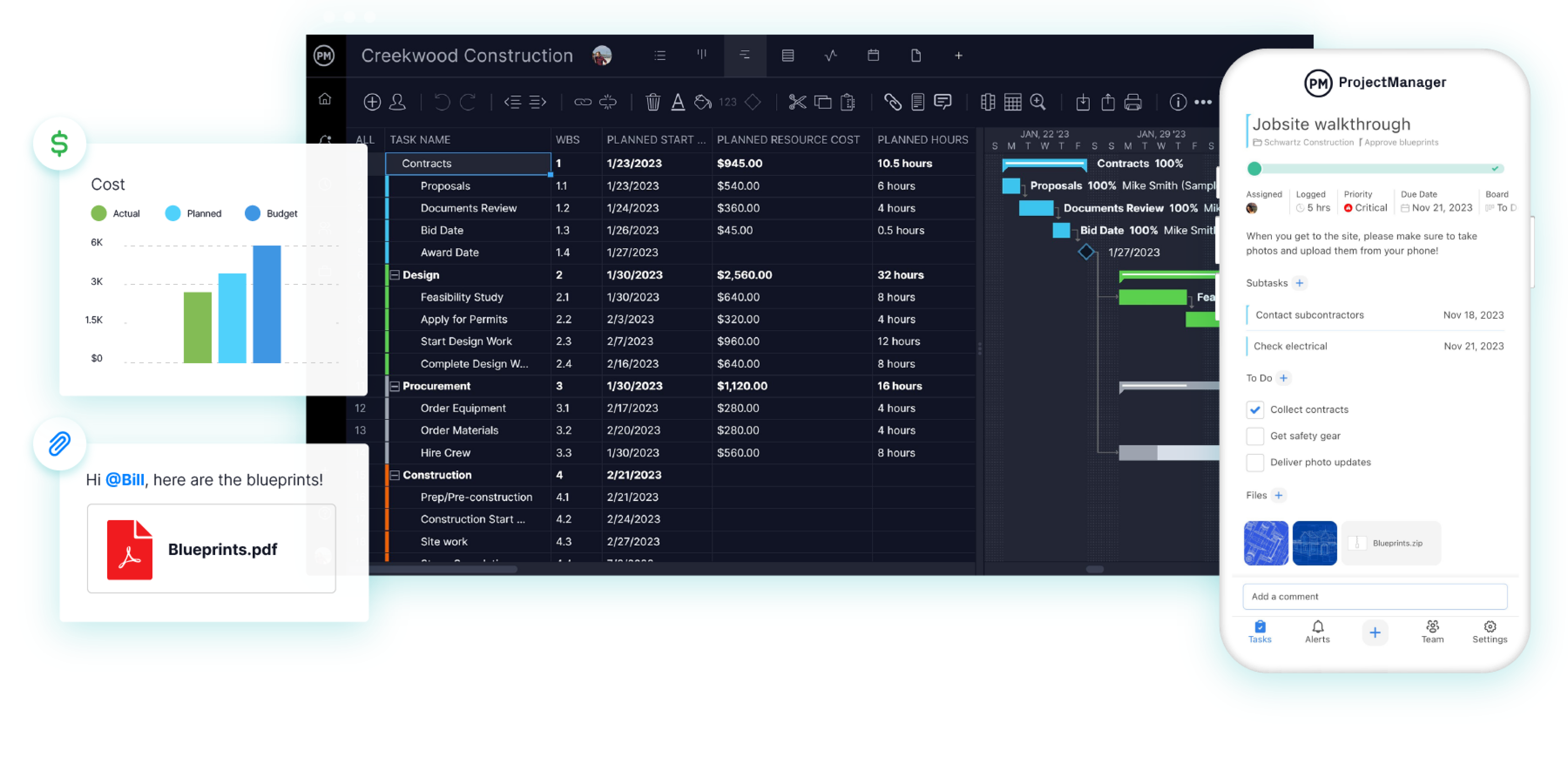Construction Project Management Software: Optimizing Operations and Performance
Construction Project Management Software: Optimizing Operations and Performance
Blog Article
Advanced Building Management Software Application: Enhancing Productivity and Cooperation in the Market
In an industry where accuracy and performance are vital, the combination of sophisticated construction monitoring software has actually reinvented the way jobs are prepared, carried out, and kept an eye on. By offering real-time job tracking capabilities, enhanced source appropriation attributes, and smooth communication systems, these software solutions have actually come to be important devices for building and construction specialists intending to boost their performance and foster stronger teamwork.
Advantages of Advanced Building And Construction Software
The application of innovative construction software substantially improves effectiveness and job results within the construction market. Via features like automated organizing, real-time cooperation tools, and data analytics, project managers can much more efficiently plan, track, and display project progression.
Additionally, progressed building software helps boost communication and partnership among project stakeholders. With centralized systems for sharing task papers, tracking modifications, and interacting updates, teams can function much more cohesively in the direction of usual project objectives. This cultivates better decision-making, decreases the probability of mistakes, and improves general task high quality.
Additionally, progressed building and construction software program provides understandings with data analytics that can assist determine trends, optimize processes, and minimize dangers. By leveraging data-driven knowledge, construction business can make even more informed decisions, adapt to changing job characteristics, and inevitably drive far better job outcomes. Generally, the benefits of sophisticated building and construction software application contribute in improving efficiency, cooperation, and project success within the building and construction market.
Real-Time Job Tracking Capabilities
With the seamless integration of real-time task monitoring capacities, construction groups can efficiently keep track of progress, boost decision-making, and make certain task timelines are met. Real-time task monitoring allows stakeholders to access updated details on different aspects of the construction task, including job conclusion condition, source allotment, and possible traffic jams. This degree of transparency fosters collaboration amongst group participants, subcontractors, and clients, leading to enhanced communication and quicker problem resolution.
In addition, real-time job tracking gives task managers with the needed information to make educated decisions quickly. By having instant accessibility to essential performance indicators and job metrics, supervisors can determine concerns early on, execute corrective measures, and maximize job operations. This positive approach assists in preventing hold-ups, minimizing expenses, and ultimately boosting overall project performance.

Improved Resource Allotment Functions
Making use of advanced resource allowance tools streamlines construction project monitoring processes and maximizes labor force efficiency. These attributes enable task supervisors to assign tasks, devices, and materials with accuracy, guaranteeing that sources are utilized properly (evolve construction). By having a central system that offers real-time exposure into resource availability and requirements, building groups can make informed choices immediately, preventing hold-ups and cost overruns
Boosted resource allowance attributes also facilitate better partnership among employee. With clear tasks and transparent source distribution, every individual recognizes their role and duties, promoting team effort and accountability. This causes find out here now improved interaction and sychronisation, inevitably boosting efficiency and task outcomes.

Improved Interaction Systems
Enhancing interaction systems in building monitoring software application significantly boosts task control and effectiveness. By integrating features such as real-time messaging, data sharing, and task jobs, groups can collaborate perfectly regardless of their physical locations. With improved interaction systems, stakeholders can receive immediate updates, share important documents, and discuss task information without hold-ups, causing quicker decision-making procedures.
In addition, these innovative communication tools permit for far better openness and accountability within construction tasks. Employee can track progression, supply comments, and address problems immediately, promoting a more collaborative and efficient work environment. In addition, having systematized interaction networks within the building and construction management software application decreases the danger of miscommunication and makes certain that all employee get on the same page.
Improving Process for Performance
By applying structured process, construction firms can eliminate traffic jams, decrease mistakes, and make sure that jobs advance efficiently from begin to finish. One method to achieve this is by automating recurring jobs navigate to this site such as job organizing, source allotment, and development monitoring.
In addition, integrating different aspects of job management, such as budgeting, record management, and interaction, right into a single platform can further streamline workflows. This integration permits for real-time collaboration and data sharing amongst staff member, getting rid of the need for hands-on information entry and ensuring that everyone is dealing with the most updated info.

Conclusion
Finally, progressed browse this site building monitoring software application supplies various benefits such as real-time job tracking, boosted resource allowance, improved interaction platforms, and structured operations. These functions add to raised efficiency and partnership within the market. By using this innovation, construction companies can optimize their operations, allocate resources better, and promote much better communication among employee. Generally, progressed building and construction software program plays an important function in enhancing performance and success in construction tasks.
Report this page